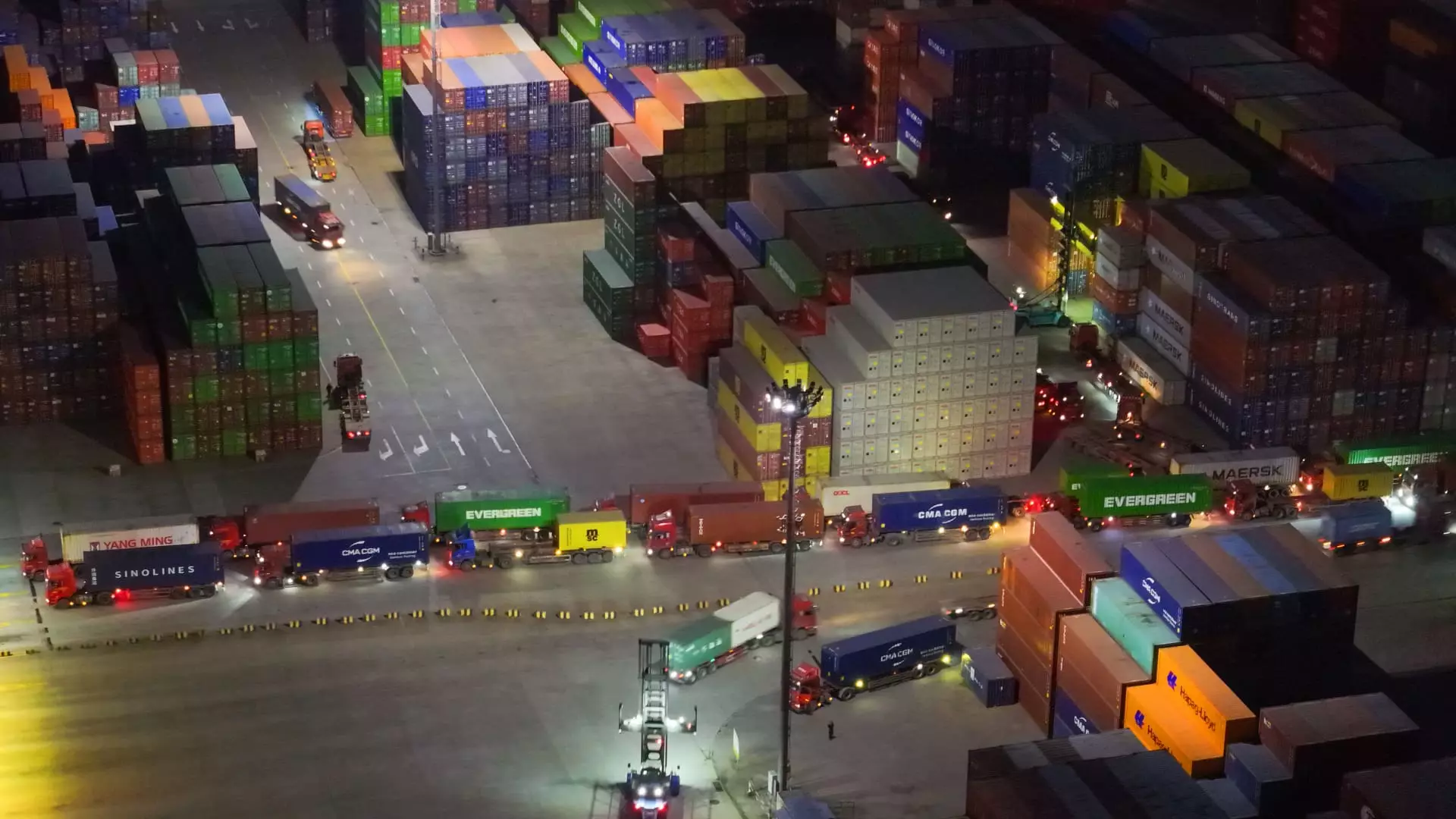The escalation of the trade war between the U.S. and China is not just another geopolitical tension; it is an imminent threat that holds serious repercussions for global economic stability. The recent downgrades in China’s GDP forecasts by major investment firms like Citi and Natixis signify a trend that could have dire consequences. With Citi lowering its growth estimate to 4.2%, the economic health of the second-largest economy is in peril. This is a wake-up call—if two of the most influential financial institutions recognize the severity of the situation, why isn’t the general public more concerned?
In contrast to earlier predictions, these downgrades expose a growing realization that potential trade agreements between the U.S. and China are increasingly unlikely. The dynamics have shifted dramatically; with each passing day, the probability of a peaceful resolution diminishes. Investors should be alarmed. The stock market and international trade are poised for turbulence, and any business relying heavily on imports or exports from these two nations is at risk of significant setbacks.
Policy Implications and Strategic Miscalculations
The U.S. government’s strategy seems more reactive than proactive. The recent actions by President Trump, including an additional 50% tariff on Chinese goods, may evoke nationalistic fervor among certain segments of the populace, but this strategy is fraught with contradictions. While tariffs are designed to protect American jobs and boost domestic production, they can just as quickly backfire by increasing consumer prices and disrupting supply chains.
The reality is that we are witnessing a battle that is not just about economics; it is about credibility and tactics. The choice to impose such crippling tariffs communicates a lack of faith in negotiations, pushing both economies closer to long-term instability. Chinese exports, which account for roughly 3% of its GDP, are not merely figures in a spreadsheet; they encompass the livelihoods of millions of workers who could be adversely affected by continuous trade tensions.
A Perilous Game of Economic Tug-of-War
Analysts from investment firms are sounding alarms, but the message seems to be lost on policymakers intent on scoring political points. The escalation in tariffs—from an initial 10% to an alarming 104%—illustrates a kind of economic tug-of-war that can only lead to a downward spiral. The findings of Goldman Sachs, indicating that a steep 50% increase in duties could cut China’s GDP by as much as 1.5 percentage points, are not just numbers; they signify the fragility of a global economy that is interconnected in ways we often take for granted.
The baffling part of this ongoing saga is China’s strategic choice to raise tariffs on U.S. goods by 34%. This kind of retaliation makes it clear that both nations are willing to impose economic pain as a means of asserting dominance. While Beijing’s economic engine continues to slow, it has room to maneuver with fiscal adjustments and an interest rate cut, enabling it to withstand external pressures. This dynamic raises questions: whose strategy is ultimately superior? In the face of escalating tariffs and fading trust, nuance is imperative in understanding this complex interplay.
The Ripple Effect: Beyond Borders
As the U.S. and China grapple with their respective economic strategies, the ripple effects are bound to be felt globally. Countries that have built their economies on the principles of open trade and mutual dependence cannot afford to remain passive observers. The implications for countries in the Asia-Pacific region, as well as those further afield, will be profound, with potential disruptions in supply chains and shifts in investment patterns.
The pressure cooker of global markets is reaching its boiling point, and there are real humanitarian concerns at play. Every percentage drop in GDP translates into tangible risks for people working in industries like manufacturing, agriculture, and technology. This situation should not just be seen through an economic lens but should be contextualized within a broader narrative of labor rights and social justice.
The ongoing U.S.-China trade war forces us to confront tough questions about the interconnectedness of global economies and what happens when national interests override collective well-being. If these tensions continue unabated, we risk not just economic downturns but a regression in the very fabric of cooperative international relationships that took decades to build.


Leave a Reply